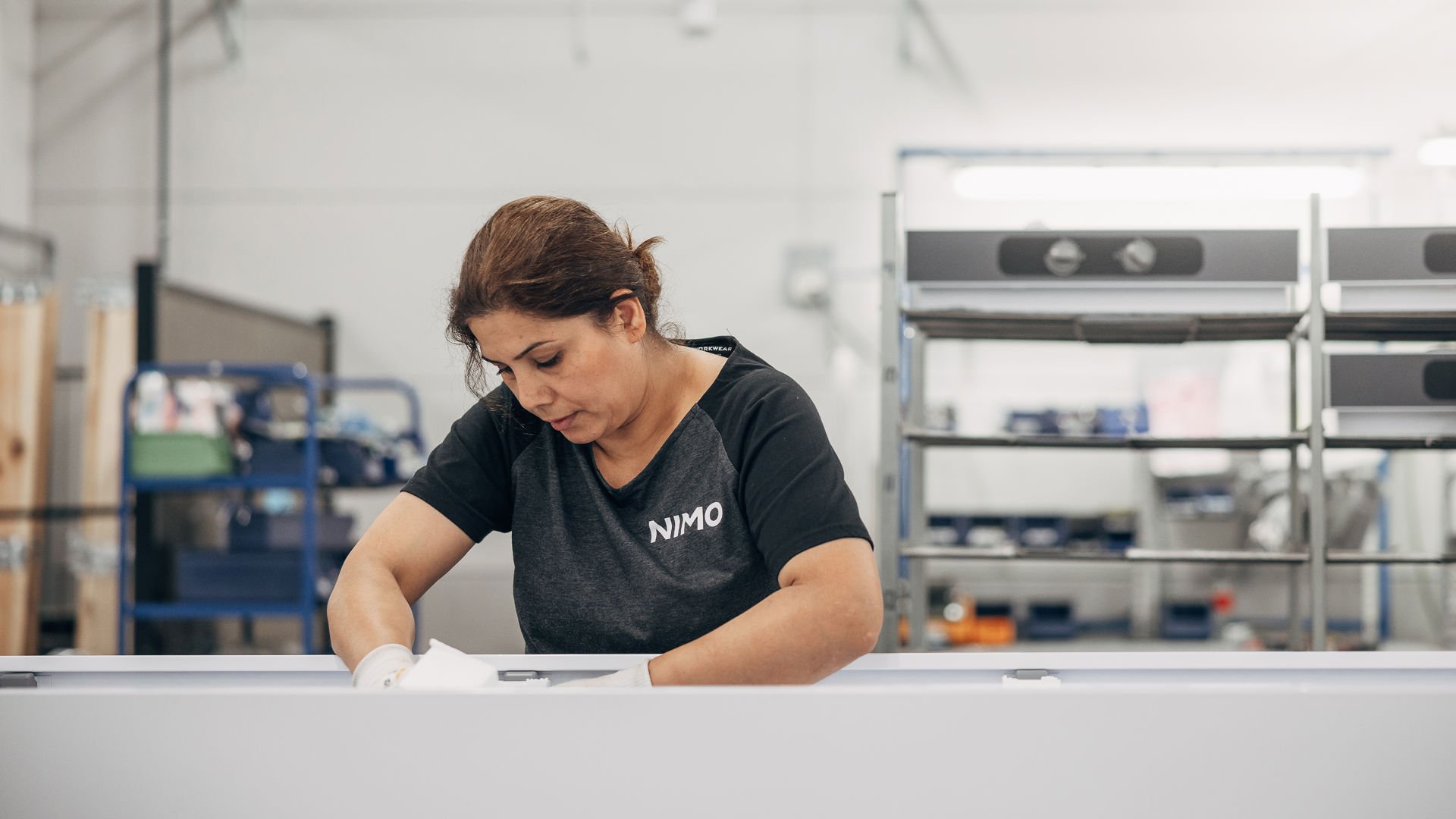Part 3: From digital model to physical prototype
The drying cabinet – Built on insight, shaped by experience
When the CAD model is complete, the next major milestone begins: building the first physical prototype. This is where blueprints meet reality – and engineering meets practical function. The aim is to validate every detail before full-scale production begins.

From CAD to production floor
Once the CAD work is finalized, production drawings are created. Based on these, NIMO’s production team prepares for manufacturing and assembles the first prototypes. At this stage, both newly fabricated parts and – when necessary – components from previous product generations are used, especially if final data is not yet available. The goal is to get as close as possible to the finished solution without locking in early decisions.
A prototype with purpose
A prototype is more than a physical model – it’s a test tool. It is used to evaluate assembly steps in collaboration with production operators and to validate core functions. Typically, 10–15 prototypes are produced before the design is finalized. This is when the product begins to meet its reality.
Function, energy and precision
Prototype testing is extensive and includes:
- Assembly testing – in close collaboration with the production team
- Performance measurements – such as drying time and energy efficiency
- Sound testing – to ensure a pleasant user experience
- Safety controls – in line with certification standards
All efficiency tests follow standardized methods that simulate real-world use as closely as possible. Long-term durability is verified through both extended wear testing and real-life field trials.
Regulations, certifications and safety
All products must meet stringent requirements for EMC and electrical safety, and be approved in accordance with applicable standards to qualify for CE and S markings. Safety testing is both fundamental and fully integrated into the validation process.
Understanding, and balancing
One of the greatest challenges in this phase is translating user needs into a technically viable, durable and commercially sustainable solution. It requires a balance between function, engineering and business.
Technologies such as AI or IoT are likely to play a greater role in future test methods – but for now, the focus remains on building trust through proven and practically grounded processes.
